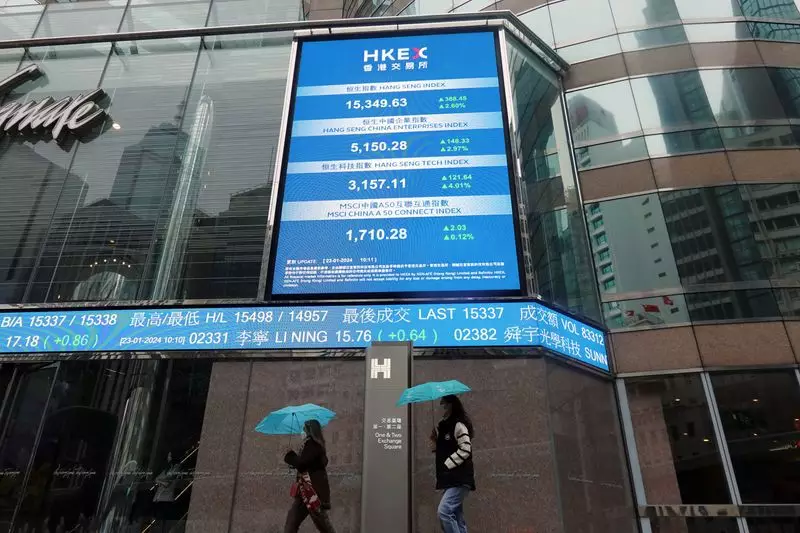As the dawn of a new trading week approaches, the Asian markets find themselves poised on the precipice of uncertainty. Notably influenced by external factors, particularly from the United States, the markets are bracing for potential turbulence. Rising U.S. bond yields, a robust dollar, and recent downturns on Wall Street are stirring doubts among investors regarding the viability of local assets. The comments from Federal Reserve Chair Jerome Powell, indicating that there is no immediate intention to lower interest rates, continue to cast a long shadow over the market outlook.
The striking ascension of the 10-year U.S. Treasury yield, hitting 4.50% for the first time in over five months, has sent ripples through global financial markets. In a notable downturn, the Nasdaq witnessed a decline exceeding 2% on the previous Friday, marking its fourth consecutive day of losses—the first such streak since April. Such persistent declines paint a concerning picture not only for U.S. markets but for global investor sentiment as well. Consequently, the MSCI World equity index also succumbed to a four-day losing streak, while the MSCI Asia ex-Japan index reported a staggering 4.35% loss, its most significant weekly fall since June 2022.
Additional layers to this complex narrative include emerging markets grappling with an impressive rally in the U.S. dollar. The dollar index surged by 1.6% last week, reaching its highest levels in over a year while continuing an alarming stretch of seven weekly increases. Although a correction seems inevitable, the current momentum appears formidable, thus suggesting that investors may need to summon considerable courage to challenge the prevailing dollar strength.
Emerging markets are facing a tough battle under the combined weight of robust U.S. economic indicators, escalating bond yields, and a soaring dollar. A report from Goldman Sachs highlighted that their emerging market financial conditions index hit a three-and-a-half-month high, indicating a tightening grip of financial conditions. Such macroeconomic pressures have led to noteworthy outflows from emerging market funds, with Barclays reporting five consecutive weeks of withdrawals, particularly from bond funds. This outflow trend further emphasizes the nervousness amongst investors as they survey the current financial landscape.
As the new week commences, Asia’s economic calendar appears relatively subdued. Key data releases are expected on this Monday, including New Zealand’s producer prices, Singapore’s non-oil trade figures, Japanese machinery orders, and earnings reports from Mitsubishi UFJ, along with GDP data from Thailand. Notably, forecasts by economists suggest that Thailand’s growth rate could accelerate to 2.6% annually, showcasing a recovery that might be the fastest in a year and a half.
Interestingly, the Thai baht has exhibited resilience against the dollar thus far, with only a decline of 1.3% year-to-date. Market consensus points to expectations of minimal easing from the Bank of Thailand, highlighting a potentially stable environment amidst broader regional concerns. However, these localized positive indicators may not be sufficient to counteract the broader headwinds stemming from global economic uncertainties.
In addition to economic factors, strained U.S.-Sino relations continue to loom large over Asian financial markets. Recent dialogue between Chinese President Xi Jinping and U.S. President Joe Biden has underscored significant geopolitical tensions. Xi’s insistence that issues related to Taiwan, democracy, and human rights are “red lines” for China serves as a reminder of the delicate balancing act that both nations must navigate. Such political dynamics could exacerbate market volatility as investors remain wary of the implications for trade and economic cooperation moving forward.
The Asian markets are entering a week filled with uncertainty fueled by external economic forces and internal regional variables. Investors must stay alert to rising U.S. bond yields, a surging dollar, and the implications of geopolitical tensions. As emerging markets struggle to position themselves for recovery amidst these challenges, the upcoming economic data may offer critical insights into the trajectory of growth across the region. The ability to navigate these challenges will require a concerted effort from economists, policymakers, and investors alike as they recalibrate their strategies in the face of evolving market conditions.

